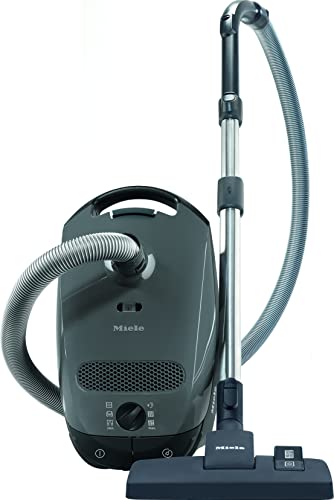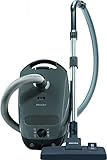Top 10 Hand Held Sewing Machines
What Is Hand Held Sewing Machine?
A hand held sewing machine is a portable, compact device that allows you to sew without the need for a bulky traditional machine. It’s perfect for quick repairs, simple alterations, and on-the-go stitching. Unlike traditional sewing machines, which can be heavy and difficult to transport, hand held sewing machines are lightweight and easy to use. They typically run on batteries or AC power and come with a variety of features such as adjustable stitch lengths and built-in lights. Hand held sewing machines work by creating tension between the needle thread and the bobbin thread using a small motor or your own manual motion. This creates stitches that are strong enough for basic repairs but may not be suitable for heavy-duty projects. There are different types of hand held sewing machines available in the market today including mechanical models, electric models with varying speed controls, corded models with more advanced functions like zigzag stitches etc., making it important to choose one based on your needs. If you’re looking for an easy-to-use alternative to traditional sewing machines that offers portability and convenience at an affordable price point then consider investing in a hand-held option!How Does Hand Held Sewing Machine Work?
A hand held sewing machine is a portable and compact device that allows you to sew fabric without the need for a traditional sewing machine. But how does it work? The basic principle of a hand held sewing machine is similar to that of a regular sewing machine – it uses two threads, one from the spool and one from the bobbin, to stitch fabrics together. However, unlike conventional machines, handheld models use your own hands to guide the fabric through the needle. To begin using your hand held sewing machine, first insert thread into both the top spool and bottom bobbin. Once threaded, place your fabric under or between the needle and presser foot. Then simply move your hands back and forth in synchronization with each other as you feed the fabric along. Hand held machines are best suited for small repairs or quick jobs on lightweight materials like cotton or polyester blends. They’re not ideal for more complex projects with heavy-duty fabrics like denim or leather. If you’re looking for an easy-to-use tool that can handle simple stitching tasks without taking up too much space in your home (or even while traveling), then a hand-held sewing machine could be just what you need!The Different Types of Hand Held Sewing Machine
Hand held sewing machines come in different types and models. The most common type is the basic hand held sewing machine, which is used for simple stitching tasks such as repairing tears or hemming pants. This type of machine is easy to use and portable, making it ideal for quick repairs on the go. Another popular type of hand held sewing machine is the battery-operated model, which runs on batteries instead of electricity. These machines are also lightweight and convenient to use but may not have as much power as their electric counterparts. For those looking for more advanced features, there are handheld sewing machines with multiple stitch settings and even computerized options with LCD screens. These models offer more versatility in terms of what you can create with them. When deciding on a hand held sewing machine, it’s important to consider your specific needs and budget. Whether you’re a beginner looking for a basic model or an experienced crafter searching for advanced features, there’s sure to be a hand held sewing machine that fits your requirements perfectly.Factors to Consider Before Buying Hand Held Sewing Machine
Before buying a hand-held sewing machine, it is essential to consider several factors. First, determine the type of projects you will be using the machine for. If you plan on working with thicker fabrics such as denim or canvas, look for a machine that can handle these materials. Consider the size and weight of the sewing machine as well. Hand-held machines are designed to be portable, but some models may still end up being too heavy or bulky to carry around comfortably. Another important factor to consider is power source. Some hand-held sewing machines rely on batteries while others need an electrical outlet. Consider where you’ll be using the machine and whether there will be a reliable power source available. It’s also crucial to think about ease of use and assembly. Look for a model that comes with clear instructions and easy-to-follow diagrams so that even beginners can quickly learn how to set up and operate them. Don’t forget about additional features like stitching options, thread tension control, and automatic needle threading systems when making your decision! Choosing the right hand-held sewing machine involves finding one that meets your specific needs in terms of capability, portability, ease-of-use, and convenience.Benefits of Using Hand Held Sewing Machine
Using a hand held sewing machine comes with several benefits. Firstly, it’s compact and easy to use, making it perfect for small repairs or quick stitches on the go. This makes it great for those who are always traveling or don’t have space for a full-sized sewing machine. Secondly, hand held sewing machines are affordable compared to their larger counterparts. They’re also cost-effective in terms of maintenance as they require minimal servicing and can handle most basic repairs themselves. Thirdly, using a hand held sewing machine is less intimidating than using traditional machines because they’re user-friendly and straightforward. Even beginners can quickly learn how to operate them without much difficulty. Fourthly, these machines produce neat and precise stitches that are strong enough to hold up against regular wear and tear. Plus, they work seamlessly on all types of fabrics including denim, leather and even silk! Investing in a hand-held sewing machine is an excellent choice if you want to save time and money while maintaining your clothes’ quality by repairing them yourself at home!The Pros and Cons of Hand Held Sewing Machine
Hand-held sewing machines have their fair share of advantages and disadvantages. Let’s take a look at the pros and cons to help you decide whether or not this type of machine is right for you. One of the biggest advantages of a hand-held sewing machine is its portability. Unlike traditional sewing machines, they are compact and lightweight, making them easy to carry around with you wherever you go. This makes them ideal for small repairs or quick stitching jobs on the go. Another advantage is that they require very little space to operate, so if your workspace is limited, then this may be an excellent option for you. Additionally, most models are cordless which means they can work without electricity. However, there are also some downsides to using a hand-held sewing machine that cannot be ignored. For one thing, they tend to have limited stitch options compared to larger machines. Furthermore, while these machines can handle light fabrics such as cotton or polyester easily; heavy-duty fabrics like denim or leather might pose challenges for them. Handhelds lack power leading it difficult in handling thicker materials Though when choosing between convenience versus functionality comes down personal preference but knowing both sides will help make an informed decision about which type of sewing machine best suits your needs!Tips For Setting Up Your Hand Held Sewing Machine
Setting up your hand held sewing machine can be a bit tricky, especially if you’re new to it. However, with some tips and tricks, you can easily set up your machine and get started on your sewing projects in no time. Firstly, it’s important to read the instruction manual carefully before setting up your hand held sewing machine. This will give you an idea of how the machine works and what each component does. Secondly, make sure that all the required parts are included in the package before starting to set up your machine. Some common components include bobbins, needles, threaders and spools. Thirdly, ensure that you have a clean workspace for setting up your hand held sewing machine. This will help prevent any dust or debris from getting into the delicate components of the machine. Fourthly, check if there are any loose screws or bolts on the machine before starting to use it. Tighten them gently using a screwdriver as needed. Take some time to practice threading and stitching on scrap fabric before starting on your actual project. This will help you get used to using the hand-held sewing machine properly without making mistakes or damaging fabrics unnecessarily. By following these tips for setting up your hand held sewing machine properly, you’ll be able to enjoy seamless stitching experiences every time!FAQs
FAQs or frequently asked questions are a common sight in every product review. When it comes to hand held sewing machines, some of the most common questions that customers ask include: “What is the maximum thickness of fabric that can be sewn with a hand held sewing machine?” The answer depends on the type and model of the sewing machine, but generally speaking, most hand held machines are designed to work best with lightweight fabrics like cotton and polyester blends. “How long does it take to learn how to use a hand held sewing machine?” Again, this question depends on several factors such as your level of experience with sewing, familiarity with using different types of machines and models. However, many users find that handheld machines are easy to use right out of the box even for beginners. “Can I replace my regular size sewing machine with a handheld one?” While handheld machines offer convenience and portability over larger traditional ones they should not be viewed as direct replacements. They may not be able to handle heavy-duty projects or thick materials like leather or denim. “Do I need any special skills or knowledge before buying a handheld sewing machine?” No prior experience is required when operating these smaller units. But having basic knowledge about threading needles will help you get started quickly. Understanding what you want from your new handheld unit can make selecting one easier; ensure you have done enough research beforehand so that you know which features are important for your needs!Conclusion
To sum up, a hand held sewing machine can be a great investment for those who want to do quick repairs and small sewing projects at home or on the go. It is portable, easy to use, and affordable. When looking for the best hand held sewing machine consumer reports recommend considering factors such as size, weight, stitching options, power source, and price. Some of the top rated hand held sewing machines in 2021 include Singer Stitch Sew Quick Hand Held Sewing Machine, KPCB Mini Sewing Machine with Upgraded Eco-Friendly Material Dual Speed Double Threaded Portable Household Sewing Machine Beginner Friendly with Foot Pedal (White), and Brother XM2701 Lightweight Full-Featured Sewing Machine. By following the tips provided in this article such as setting up your machine correctly and practicing beforehand on scrap fabric before starting your project you’ll be able to make clothing alterations or create new pieces like bags or pillow covers easily in no time! Remember that practice makes perfect so don’t give up if it doesn’t come naturally at first. We hope this article has been helpful in guiding you towards finding the best hand held sewing machine for your needs. With a little bit of patience and practice you’ll soon become an expert seamstress!I’m Ella Andrews, owner of the website https://bestconsumerstips.com/
I give you valuable information about good products to help you choose the best product.











